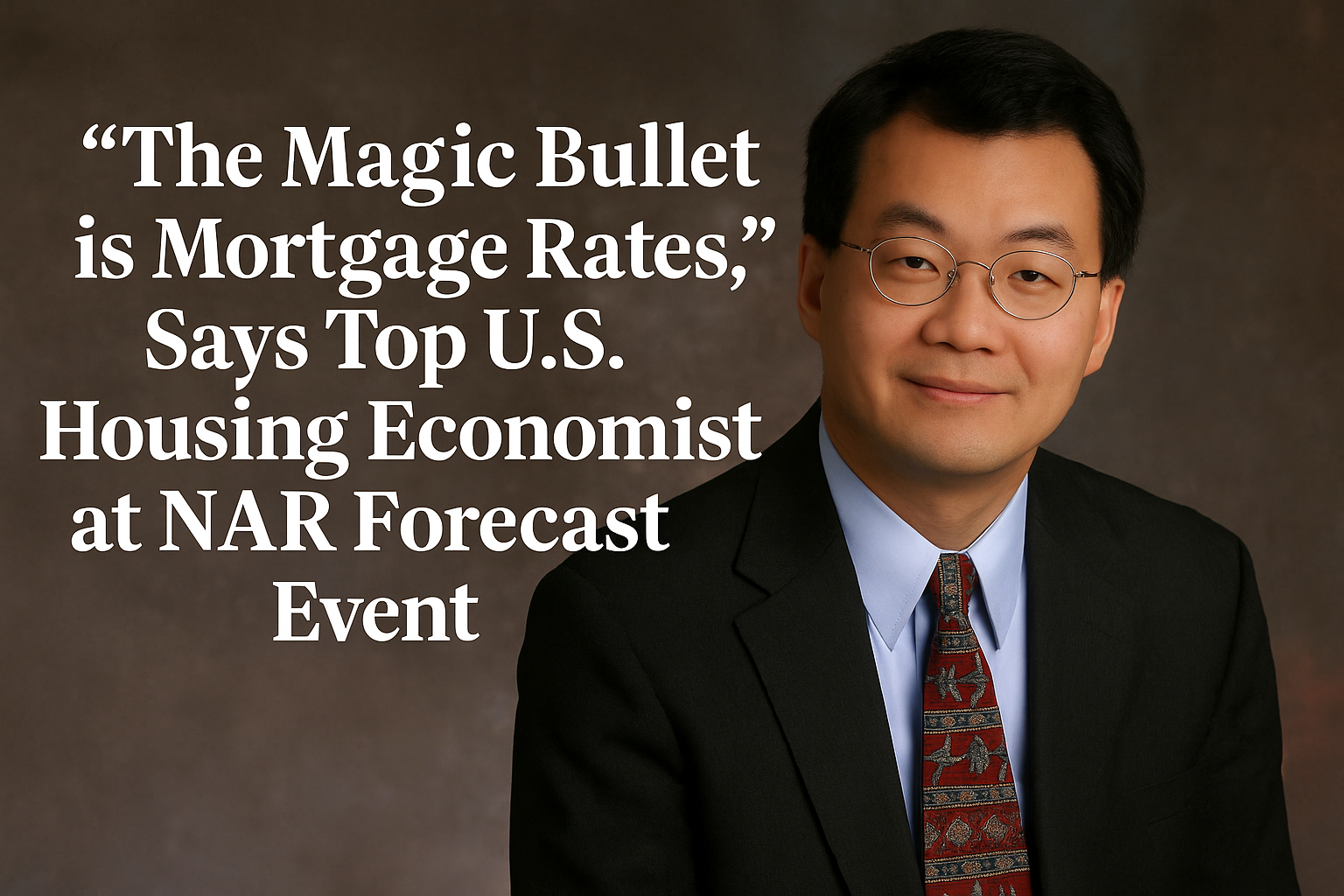
If you were hoping for some bright spots in the real estate market this summer, you’re not alone—so was Dr. Lawrence Yun.
Yesterday, I attend the Economic Issues & Trends Forum at NAR’s Mid-Year Meetings in Washington D.C. at which, Lawrence Yun, Chief Economist for the National Association of Realtors, opened with a bit of candor: “I thought at this conference I would share some good news with you. Home sales are rising. Momentum is building. But we are not seeing that”.
That tone—frustrated but factual—carried through his forecast. Despite being named one of the nation’s top economic forecasters by The Wall Street Journal, Yun admitted the housing recovery he expected simply hasn’t materialized. And while the demand is there—mortgage applications to buy are up 20% from a year ago—buyers remain sidelined by high rates and affordability.
So what’s holding everything back? According to Yun, it comes down to mortgage rates—and their unusually high spread above the 10-year Treasury yield. “Under normal circumstances, we should be seeing mortgage rates around 6%, not 7%,” he said. That 1% difference is no small matter. “For new buyers, their monthly obligations have skyrocketed”.
The causes, Yun explained, are tangled up in politics and policy: tariff uncertainty, a downgraded U.S. credit rating, and ongoing debate around Fannie Mae and Freddie Mac reform. Until those clouds clear, markets aren’t responding to Fed policy the way they usually would. “The mortgage rate is the magic bullet,” Yun said. “We are just awaiting and awaiting as to when that could come down”.
Meanwhile, affordability pressure continues. Home prices are flat or slightly up nationally, but still nearly double what they were five years ago when you factor in today’s mortgage rates. According to Danielle Hale, Chief Economist at Realtor.com, even though listings are up 30% year over year, buyer activity isn’t catching up—pendings are still soft, and homes are sitting longer. “We’re seeing the highest level of price reductions this season in recent memory,” Hale said.
But there are pockets of promise. Yun noted that in affordable areas like the Midwest and upstate New York, demand is rebounding, and price appreciation is leading the nation. And as wage growth has finally overtaken inflation, Hale pointed out that many buyers say they’d actually be more likely to buy if a recession hits—banking on a break in prices or rates.
There’s also no indication of a market crash. “We are at historically low default rates,” Yun emphasized. Even FHA loans—typically first-time buyer territory—are performing well.
Still, it’s a market stuck in limbo. Many existing homeowners, locked into 3% mortgages, are staying put. That “lock-in effect” continues to restrict resale inventory, leaving new construction as one of the few sources of available homes. And builders are getting creative—offering rate buy-downs that can shave up to 0.5% off what buyers might get elsewhere.
So where’s it all headed? Yun’s forecast calls for a second-half rebound in 2025—assuming rates ease, confidence grows, and some of that pent-up demand finally breaks loose. But, as he said, “I’m not happy… I want to see more people advance to homeownership. That’s what this is all about”.
Key Takeaways for Agents, Buyers & Sellers:
-
Mortgage rate spread remains unusually high—keeping homeownership out of reach for many.
-
Inventory is rising, especially from builders, but resale listings are still constrained.
-
Price cuts are growing, but home prices overall remain high.
-
Demand is waiting in the wings—buyers are ready, but they need affordability relief.
